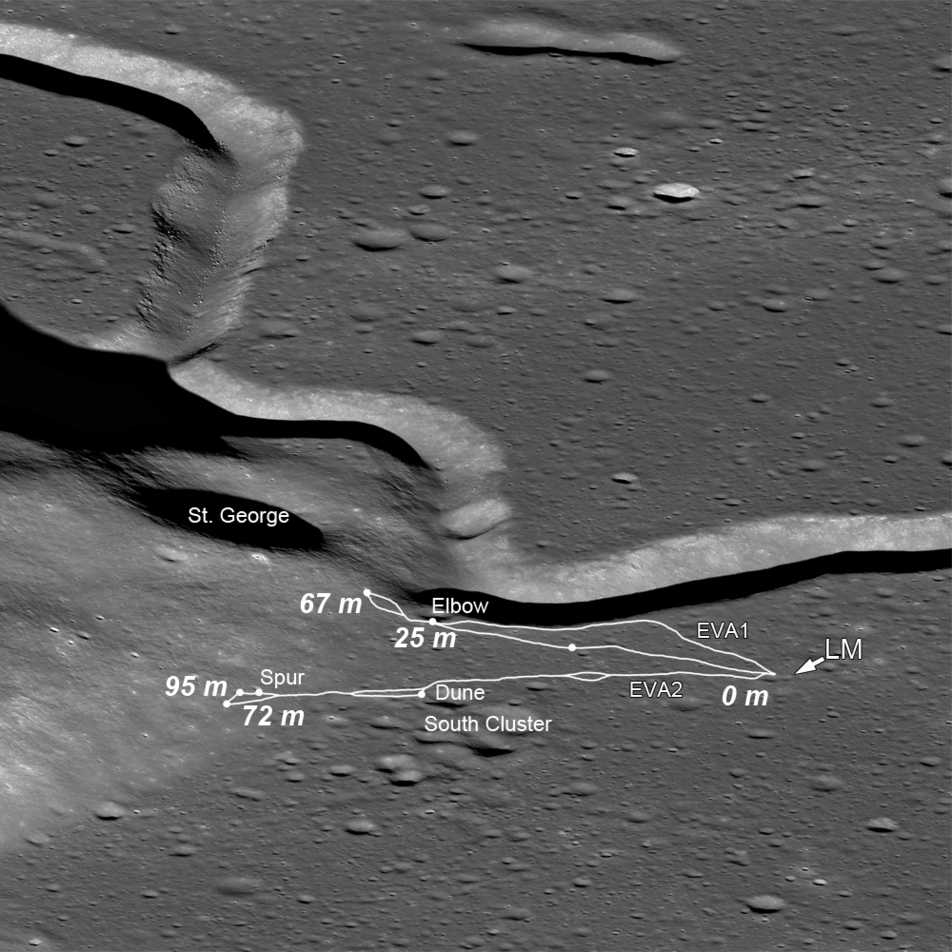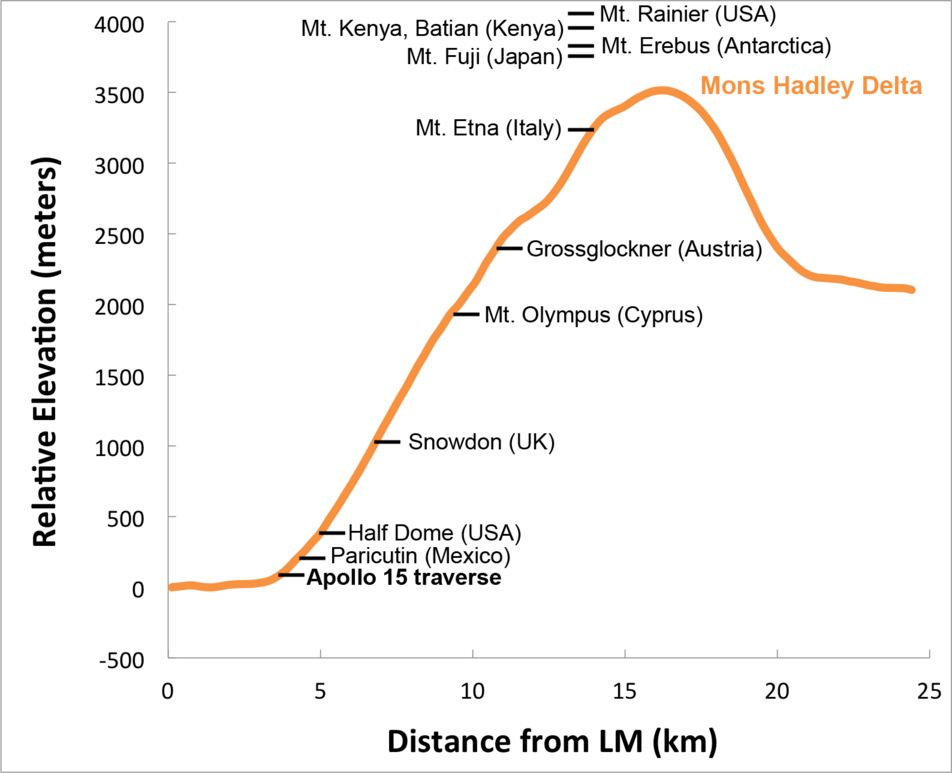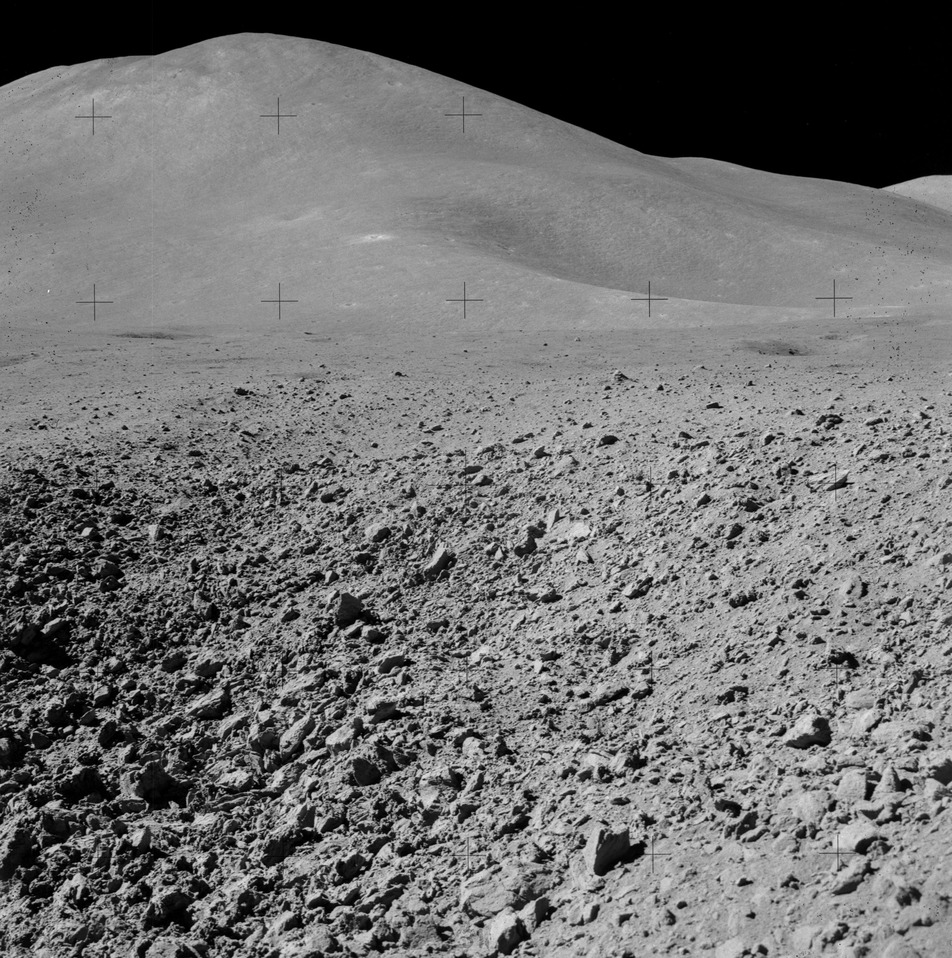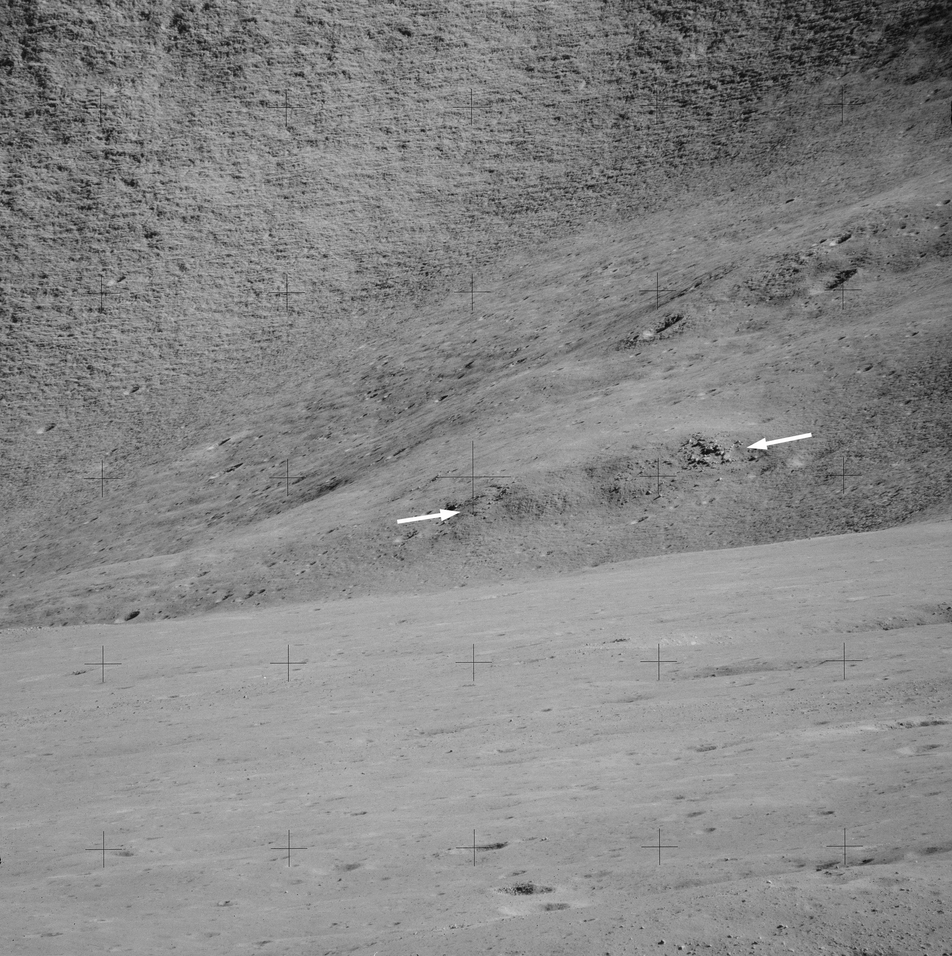
The lofty Apennine Mountain Range has two prominent peaks near the Apollo 15 landing site: Mt. (Mons) Hadley (relative height ~4km, or 13,000 ft) to the northeast and Mons Hadley Delta (~3.5 km, 11,500 ft high) to the south. Between these two peaks lies the Swann Range, named for the mission's Geology Team Leader, Gordon Swann. The Apennine Mountain Range contains some of the largest peaks on the Moon! The height of Mt. Hadley rivals the prominences of notable terrestrial mountains like Mt. Rainier (USA), Mt. Fuji (Japan), and Mt. Erebus (Antarctica), when measured from base to summit.

The first Apollo 15 EVA took astronauts David Scott and James Irving southward along the edge of Hadley Rille and to the base of Mt. Hadley Delta near St. George crater. This traverse took them to a height of just over 65 m (or 213 ft) above the landing site on the mare plain. At this height, much of the surface material of the mountain comprises debris that, over eons, slid down the upper slopes through mass-wasting. Materials collected in this area primarily consist of regolith, as there are very few surface boulders.

The second EVA took the astronauts southeast to "South Cluster" and Spur craters. At Spur crater, a very old crystalline rock fragment was collected, containing evidence of geologic processes more than 4 billion years old and representing a piece of the original anorthositic crust of the Moon. They also discovered an unusual green material composed of volcanic glass.
This traverse ascended about 95 m in elevation up the base of Hadley Delta. At times, the slope was so steep (~18°) that the rover had difficulty getting traction, and the mountain peak loomed so high overhead, that the astronauts could not lean back far enough to get it in the frame of their cameras.
During this traverse, the astronauts commented that they thought they could detect a high-mark where lava might once have filled the basin at the base of nearby Mt. Hadley around a height of 85 meters above the current mare plain.

While the Apollo 15 astronauts scarcely climbed the lower slopes of a lunar mountain, they made many important discoveries. What challenges, findings, and fun (like slope skiing) might future explorers experience on the powdery mountains of the Moon?
Explore the first two of the Apollo 15 traverses in more detail below by panning and zooming. The numbers indicate relative elevations of the paths travelled by the astronauts.
Related Posts:
Remnants of the Imbrium Impact
Hadley-Apennine: the Apollo 15 Landing Site
Retracing the Steps of Apollo 15: Constellation Region of Interest
The Mighty Apennine Mountain Range
LROC’s First Look at the Apollo Landing Sites
The Apollo 15 Lunar Laser Ranging Retroreflector - A Fundamental Point on the Moon!
Layers near Apollo 15 Landing Site
LROC Explores Apollo 15 (YouTube video)
Hadley Rille and the Mountains of the Moon
Soaring Over Mighty Mt. Hadley
Published by J. Stopar on 20 June 2014